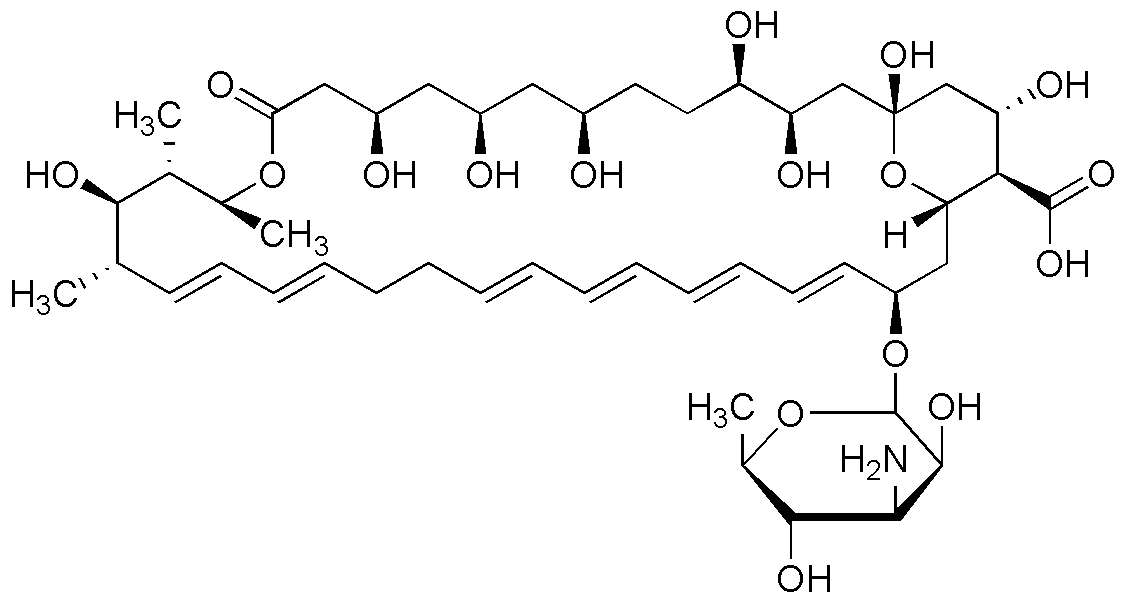Nystatin is widely utilized in research focused on:
- Antifungal Treatments: Commonly used in the medical field to treat fungal infections, particularly those caused by Candida species. It is effective for patients with weakened immune systems.
- Pharmaceutical Formulations: Incorporated into topical creams, ointments, and oral suspensions, providing a versatile option for treating localized infections.
- Veterinary Medicine: Employed in veterinary practices to manage fungal infections in animals, ensuring the health and well-being of pets and livestock.
- Research Applications: Used in laboratory settings to study fungal biology and resistance mechanisms, aiding in the development of new antifungal agents.
- Food Preservation: Investigated for its potential use as a natural preservative in food products, helping to inhibit fungal growth and extend shelf life.
General Information
Properties
Safety and Regulations
Applications
Nystatin is widely utilized in research focused on:
- Antifungal Treatments: Commonly used in the medical field to treat fungal infections, particularly those caused by Candida species. It is effective for patients with weakened immune systems.
- Pharmaceutical Formulations: Incorporated into topical creams, ointments, and oral suspensions, providing a versatile option for treating localized infections.
- Veterinary Medicine: Employed in veterinary practices to manage fungal infections in animals, ensuring the health and well-being of pets and livestock.
- Research Applications: Used in laboratory settings to study fungal biology and resistance mechanisms, aiding in the development of new antifungal agents.
- Food Preservation: Investigated for its potential use as a natural preservative in food products, helping to inhibit fungal growth and extend shelf life.
Documents
Safety Data Sheets (SDS)
The SDS provides comprehensive safety information on handling, storage, and disposal of the product.
Product Specification (PS)
The PS provides a comprehensive breakdown of the product’s properties, including chemical composition, physical state, purity, and storage requirements. It also details acceptable quality ranges and the product's intended applications.
Certificates of Analysis (COA)
Search for Certificates of Analysis (COA) by entering the products Lot Number. Lot and Batch Numbers can be found on a product’s label following the words ‘Lot’ or ‘Batch’.
Numéro de catalogue
Numéro de lot/série
Certificates Of Origin (COO)
This COO confirms the country where the product was manufactured, and also details the materials and components used in it and whether it is derived from natural, synthetic, or other specific sources. This certificate may be required for customs, trade, and regulatory compliance.
Numéro de catalogue
Numéro de lot/série
Safety Data Sheets (SDS)
The SDS provides comprehensive safety information on handling, storage, and disposal of the product.
DownloadProduct Specification (PS)
The PS provides a comprehensive breakdown of the product’s properties, including chemical composition, physical state, purity, and storage requirements. It also details acceptable quality ranges and the product's intended applications.
DownloadCertificates of Analysis (COA)
Search for Certificates of Analysis (COA) by entering the products Lot Number. Lot and Batch Numbers can be found on a product’s label following the words ‘Lot’ or ‘Batch’.
Numéro de catalogue
Numéro de lot/série
Certificates Of Origin (COO)
This COO confirms the country where the product was manufactured, and also details the materials and components used in it and whether it is derived from natural, synthetic, or other specific sources. This certificate may be required for customs, trade, and regulatory compliance.


